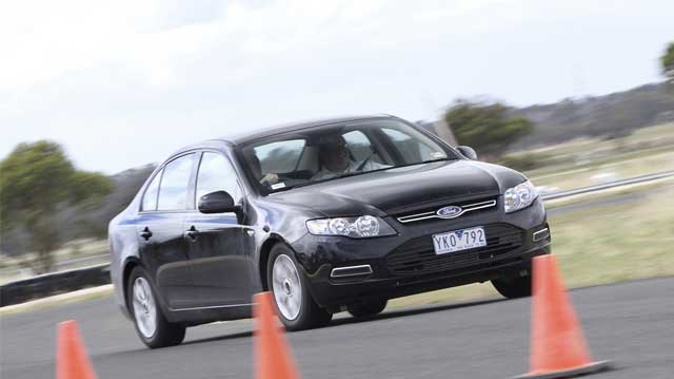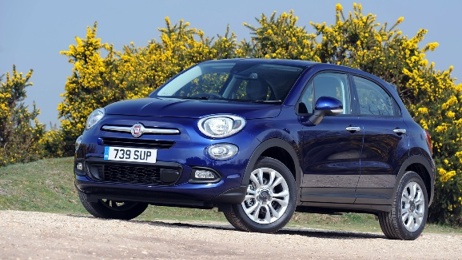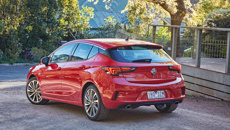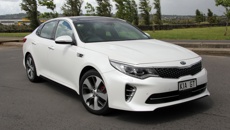
Life is full of surprises and one of biggest in terms of cars I have road tested this year, is the remarkable two-litre Eco Boost powered entry level Ford Falcon XT sedan.
There were no shortages nay-sayers who said the idea of a four cylinder engine in a Falcon was nuts. Now this vocal group has been silenced, as this four cylinder turbo charged Falcon has blasted a side the critics on its way to building a solid fan base. If there was an award for the surprise automotive package of 2012 this car would clean up.
Ford sees its EcoBoost engine technology as the key to growing its sales over the next few years. Under scoring the importance of the engine to the blue oval is the fact that by next year, more than 90 per cent of Ford’s global nameplates will have an EcoBoost option. These new generation engines combine direct injection, turbo charging and variable valve timing to maximise performance and torque while substantially trimming fuel economy and CO2 emissions.
The development of the EcoBoost engine for the Falcon was a key element of a $232 million investment to put something of an eco-friendly halo over its Australian-made vehicle lines, including a new diesel engine for Territory. By adding EcoBoost technology to the Falcon model mix, Ford is able to offer a full-size rear wheel drive sedan with improved fuel efficiency and lower engine emissions to satisfying the increasing environmental expectations of new car buyers.
Globally car makers are turning to more efficient, smaller capacity engines to meet demanding fuel economy and CO2 emissions targets without giving up the power and torque of larger-capacity petrol engines. The EcoBoost does this in compelling fashion.
Value for money could be a bit of an issue for the EcoBoost Falcon on our market where it sports the same $48,490 price tag as the 4.0 litre six cylinder model. Despite this apparent size superiority, the power differences between the two engines is far closer, with the 179kw the EcoBoost just 16 kilowatts adrift of the Falcon six in the power stakes.
The EcoBoost engine has been refined for maximum operating efficiency, with an advanced combustion system design allowing it to meet the most stringent global CO2 emissions requirements. The turbocharger recovers energy from the exhaust that would otherwise be wasted and puts it back into the engine to gain efficiency.
The major benefits for buyers who opt to take the Ecoboost route are superior grunt, fuel consumption and emissions. If that does not get potential buyers hooked, then the motors strong low-end torque and responsive performance right across the rev range certainly will! I didn’t think it was possible to make an engine so small go so well in car for this big. Then again you should never under estimate what a little EcoBoost magic can do.
In four-cylinder form the Falcon XT scores a slick and very savvy tip shift 6-speed automatic. The gear changing force behind the four-litre six is an older five-speed transmission. It does the basics well enough, but simply cannot foot with the gear changing smarts of the EcoBoosts six speed box.
One of the arguments for buying big Aussies sixes like the Falcon, use to be their generously sized cabin and boot compartments. They have now been upstaged in this department by a number of cleverly packaged and very space efficient medium sized sedans, including the Toyota Camry and one of Ford’s own, the Mondeo.
This latest generation Falcon was the first Australian built car to score a coveted five star ANCAP crash test rating. Ford was able to bag these bragging rights by fitting dynamic stability control across all models along with ABS brakes with electronic brake force distribution and emergency brake assist. Including a full arsenal of airbags over the entire range also inflated its prospects in the search for that elusive five-star ANCAP safety rating.
The styling is clean and modern and from some angles looks similar to the Ford Mondeo. This latest generation Falcon and potentially the last, is a car where Ford Australia should have been be a bit more adventurous with the styling. Compared to the rest of the rather dashing looking Ford passenger car line-up, the Falcon appears to have not only missed the styling bus - it has not even looked like getting a boarding pass.
The XT, despite having suspension that uses softer springs and dampers than sportier XR6 is still an accomplished handler. With less weigh over the front end than the six cylinder model the EcoBoosts handling feels sharper. It has quicker reaction times to changes in direction requested by the driver, while the suspension is more effective at fending off the nasty surprises serviced up by our demanding road surfaces.
The amount of grip for a big rear wheel drive sedan is surprising with the test car feeling well within its comfort zone over a variety of roads, ranging from highways to gravel country by ways. Here is at last is an affordable Falcon that does not get its feather ruffled by the rough stuff our roads and demanding terrain dish up. As good as the EcoBoost Falcon is, I do not think its talents will be fully appreciated on our market, because the idea of a four cylinder motor in six cylinder car is just too hard for many buyers to reconcile themselves with.
What’s the verdict? Hugely talented yet highly under rated it’s one of the best Falcons I have ever driven.
There were no shortages nay-sayers who said the idea of a four cylinder engine in a Falcon was nuts. Now this vocal group has been silenced, as this four cylinder turbo charged Falcon has blasted a side the critics on its way to building a solid fan base. If there was an award for the surprise automotive package of 2012 this car would clean up.
Ford sees its EcoBoost engine technology as the key to growing its sales over the next few years. Under scoring the importance of the engine to the blue oval is the fact that by next year, more than 90 per cent of Ford’s global nameplates will have an EcoBoost option. These new generation engines combine direct injection, turbo charging and variable valve timing to maximise performance and torque while substantially trimming fuel economy and CO2 emissions.
The development of the EcoBoost engine for the Falcon was a key element of a $232 million investment to put something of an eco-friendly halo over its Australian-made vehicle lines, including a new diesel engine for Territory. By adding EcoBoost technology to the Falcon model mix, Ford is able to offer a full-size rear wheel drive sedan with improved fuel efficiency and lower engine emissions to satisfying the increasing environmental expectations of new car buyers.
Globally car makers are turning to more efficient, smaller capacity engines to meet demanding fuel economy and CO2 emissions targets without giving up the power and torque of larger-capacity petrol engines. The EcoBoost does this in compelling fashion.
Value for money could be a bit of an issue for the EcoBoost Falcon on our market where it sports the same $48,490 price tag as the 4.0 litre six cylinder model. Despite this apparent size superiority, the power differences between the two engines is far closer, with the 179kw the EcoBoost just 16 kilowatts adrift of the Falcon six in the power stakes.
The EcoBoost engine has been refined for maximum operating efficiency, with an advanced combustion system design allowing it to meet the most stringent global CO2 emissions requirements. The turbocharger recovers energy from the exhaust that would otherwise be wasted and puts it back into the engine to gain efficiency.
The major benefits for buyers who opt to take the Ecoboost route are superior grunt, fuel consumption and emissions. If that does not get potential buyers hooked, then the motors strong low-end torque and responsive performance right across the rev range certainly will! I didn’t think it was possible to make an engine so small go so well in car for this big. Then again you should never under estimate what a little EcoBoost magic can do.
In four-cylinder form the Falcon XT scores a slick and very savvy tip shift 6-speed automatic. The gear changing force behind the four-litre six is an older five-speed transmission. It does the basics well enough, but simply cannot foot with the gear changing smarts of the EcoBoosts six speed box.
One of the arguments for buying big Aussies sixes like the Falcon, use to be their generously sized cabin and boot compartments. They have now been upstaged in this department by a number of cleverly packaged and very space efficient medium sized sedans, including the Toyota Camry and one of Ford’s own, the Mondeo.
This latest generation Falcon was the first Australian built car to score a coveted five star ANCAP crash test rating. Ford was able to bag these bragging rights by fitting dynamic stability control across all models along with ABS brakes with electronic brake force distribution and emergency brake assist. Including a full arsenal of airbags over the entire range also inflated its prospects in the search for that elusive five-star ANCAP safety rating.
The styling is clean and modern and from some angles looks similar to the Ford Mondeo. This latest generation Falcon and potentially the last, is a car where Ford Australia should have been be a bit more adventurous with the styling. Compared to the rest of the rather dashing looking Ford passenger car line-up, the Falcon appears to have not only missed the styling bus - it has not even looked like getting a boarding pass.
The XT, despite having suspension that uses softer springs and dampers than sportier XR6 is still an accomplished handler. With less weigh over the front end than the six cylinder model the EcoBoosts handling feels sharper. It has quicker reaction times to changes in direction requested by the driver, while the suspension is more effective at fending off the nasty surprises serviced up by our demanding road surfaces.
The amount of grip for a big rear wheel drive sedan is surprising with the test car feeling well within its comfort zone over a variety of roads, ranging from highways to gravel country by ways. Here is at last is an affordable Falcon that does not get its feather ruffled by the rough stuff our roads and demanding terrain dish up. As good as the EcoBoost Falcon is, I do not think its talents will be fully appreciated on our market, because the idea of a four cylinder motor in six cylinder car is just too hard for many buyers to reconcile themselves with.
What’s the verdict? Hugely talented yet highly under rated it’s one of the best Falcons I have ever driven.
Take your Radio, Podcasts and Music with you









